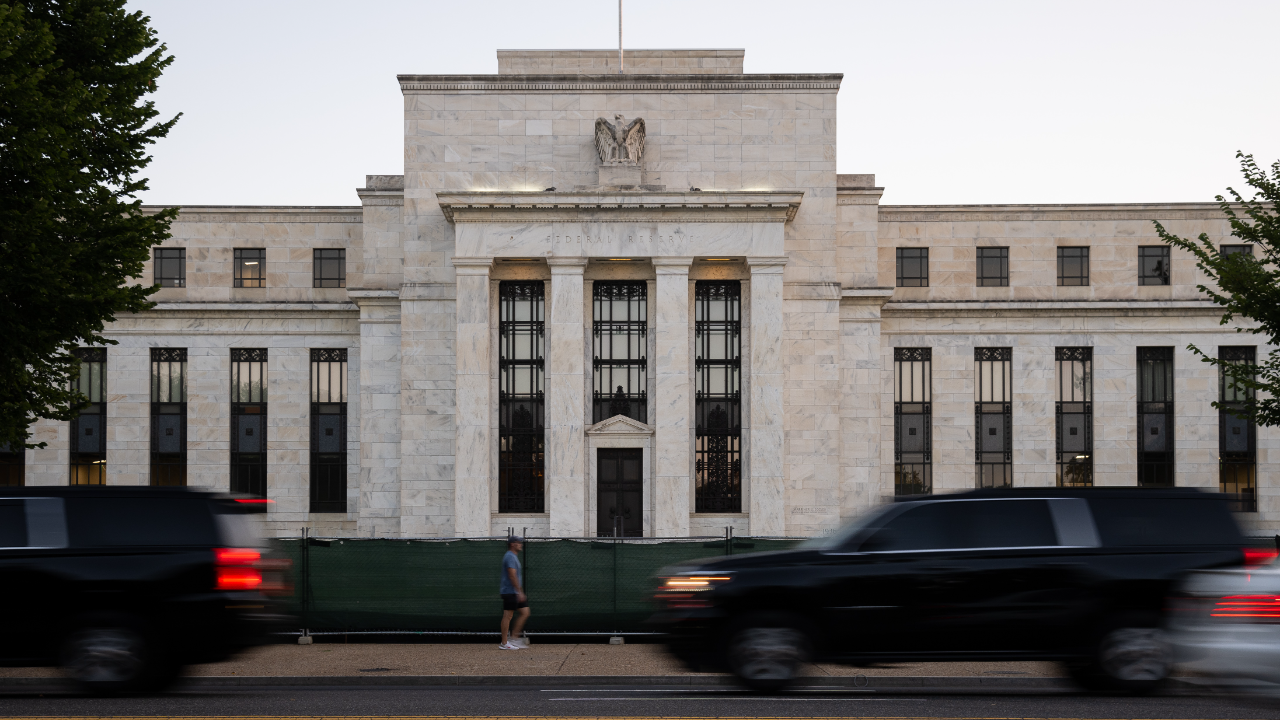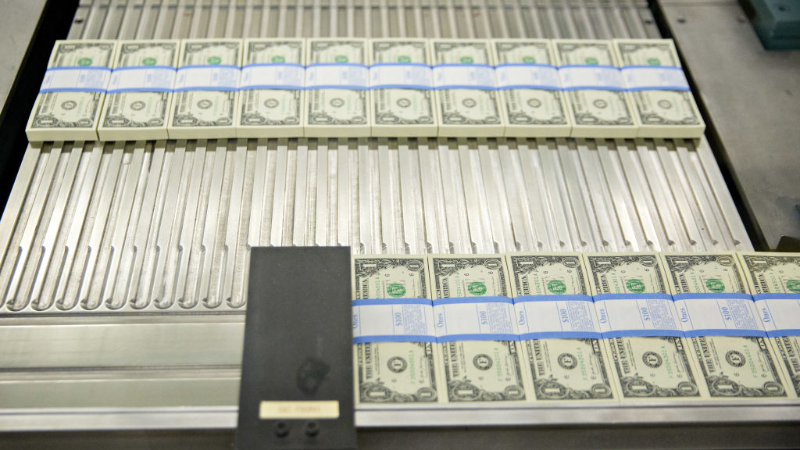The U.S. economy could be at stake when Fed interest rates rise above this crucial level

The Bankrate promise
At Bankrate we strive to help you make smarter financial decisions. While we adhere to strict , this post may contain references to products from our partners. Here's an explanation for .
The Federal Reserve’s September meeting will likely mark a new era for monetary policy, and it might be the point when things start to feel really ugly for the U.S. economy — by design.
If officials raise rates by a likely three-quarter point this week, the Fed’s benchmark federal funds rate will cross a crucial line for the first time in more than a decade: An economic red-zone known to monetary policymakers as “the neutral rate of interest.”
The threshold is illusive, even for Fed policymakers. It’s constantly in motion, has fallen by almost 2 percentage points since officials first started publishing their estimates and is more of a guess than an absolute.
But for consumers and businesses alike, the implications are clear: Once rates rise above that point, the Fed believes rates are no longer stimulating the U.S. economy. Instead, they’re actively slowing activity down.
Things could get worse before they get better in Fed’s race to slow the economy
That might make Americans feel like things could go from bad to even worse. To be sure, many feel like they’ve witnessed a slowdown in the economy already. The S&P 500 is down more than 19 percent since the start of the year, economic activity declined for two straight quarters, the once-vigorous housing market is coming to a halt and consumers haven’t ever felt this badly about the financial system, according to a sentiment gauge from the University of Michigan.
But beyond those rate-sensitive sectors, the U.S. economy still looks good on paper. It’s increasingly becoming everyone’s problem — both for central bankers and the consumers who are coming face-to-face with the reality that interest rates likely have to rise much higher than anyone expected before red-hot inflation starts to cool.
Businesses have nearly two open jobs per every unemployed worker and have added nearly half a million jobs on average over the past 12 months. Even with layoff announcements perking up in the technology and financial services sectors, Americans aren’t appearing to have to look very long for new work, and joblessness is at a near half-century low.
Price pressures, however, are showing troubling signs of heating up beyond just expensive food and gas prices, even with the Fed raising interest rates at the fastest pace in four decades. Rent in August, for example, climbed at the fastest pace since August 1986, while medical care, tuition, insurance, appliances and services also soared.
“Outside of the housing market, there’s not a tremendous amount of evidence that rate hikes to date are slowing the economy,” says Steve Friedman, macro economist and managing director at MacKay Shields, a former vice president at the New York Fed. “It does raise the question of whether they need to take rates even further into restrictive territory.”
Interest rates are rising faster than many businesses and consumers have ever seen
Technically, the Fed’s neutral rate of interest is the point at which rates are no longer stimulating economic growth, but they’re also not restricting it. In normal times, it’s supposed to be a “do-no-harm” rate-setting barricade, reflecting the short-term interest rate consistent with maintaining both stable prices and full employment — the Fed’s dual mandate. Policymakers cross to either side of the line when they want to speed up or slow down the economy.
If the economy is facing a crisis or needs a boost, officials will likely make sure interest rates are below that threshold. Doing so makes money cheap, leading consumers to spend more and giving companies the wherewithal to expand, bolstering the employment side of the Fed’s mandate.
But rates have been in that position since the aftermath of the financial crisis — meaning consumers and businesses don’t have much recent memory living through the environment ahead of them.
When rates rise above neutral, the Fed is explicitly trying to slow spending, investing and hiring. They’ll likely do it for a reason: Cooling inflation.
“The idea of neutral is a little bit squishy, but what we do know is, inflation is way too high, the labor market is way too tight and interest rates are still too low to solve either of those problems,” says Greg McBride, CFA, Bankrate chief financial analyst.
Where is the neutral rate?
The so-called neutral rate is currently believed to be 2.5 percent, at least according to the median estimate among Fed officials from their June projections. At the same time, however, estimates range from as low as 2 percent to as high as 3 percent, the Fed’s models show.
It highlights the main problem: Neutral is up for debate, taking into account a wide variety of factors, including productivity, trend growth, inflation expectations and financial conditions. For that reason, officials often like to say neutral is something that’s inferred rather than known — and it’s just another factor making the Fed’s job hard.
The Fed has certainly learned it can be difficult to get it right since it started publishing its estimates of neutral in January 2012. Back then, neutral was believed to be at 4.3 percent. Officials gradually walked that estimate down — until June 2019, when 2.5 percent officially became the goal post.
Rates in 2018 came close to the Fed’s estimates of neutral. The fed funds rate peaked at 2.25-2.5 percent after the central bank’s ninth and final rate hike in December 2018, but tepid inflation amid the lowest unemployment in half a century tested officials’ perceived belief that rates would neither slow down or speed up the economy once they reached 2.8 percent.
By June 2019, officials would cut interest rates at three straight meetings starting one month later, judging the economy needed more stimulus — not less.
“There were unmistakable signs the economy was slowing,” McBride says. “Sounds a lot like 2022,” but the Fed’s perspective now is different “because we’re talking about inflation that’s at a 40-year high and the urgency to get that down.”
Interest rates again approached the vicinity of neutral in July 2022, when officials hiked interest rates by three-quarters of a point for the second time this year to a target range of 2.25-2.5 percent. Yet, Fed Chair Jerome Powell noted in an August speech that neutral is “not a place to stop or pause,” considering inflation is running far above 2 percent and the labor market is extremely tight.
Complicating the debate, officials in records of the Fed’s July meeting questioned whether the point at which rates will actually start to restrict the economy is now much higher than 2.5 percent, at least in the short-run. Former Treasury Secretary Lawrence Summers has also been vocal on the topic, in July calling a 2.5 percent neutral rate “inconceivable” when inflation is more than three times that amount.
“The problem with the long-run neutral rate is no one actually knows what it is,” says Megan Greene, global chief economist at the Kroll Institute. “It’s intellectually important the Fed is hiking rates above where they think neutral is, but another debate in addition to trying to work out where neutral is, is about how much further rates have to go above neutral to bring inflation down.”
Why the neutral debate matters for your money
Cooling inflation is the Fed’s top concern right now. The higher rates have to climb to accomplish that mission, the more perilous it can be for the economy. Even Powell admitted the process can inflict some pain, hinting officials are all about getting the job done, even if it means starting a recession.
Powell and Co. hope it will underscore for consumers the Fed’s commitment to getting inflation back down. But it also means things could get worse for Americans before they get better. A bumpy road lies ahead, illustrating how important it is to prepare for rough times by building up your emergency fund, staying the course on your investments and finding the right place to keep your money during the biggest hit to your purchasing power in four decades.
“It all suggests recession risks over the next year are quite elevated,” MacKay Shields’ Friedman says. “It’s hard to engineer a soft landing when inflation is high.”
